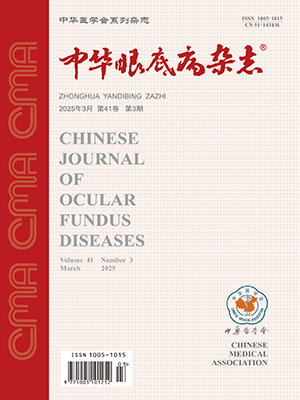Objective To observe the expression of C9 in laser-induced choroidal neovascularization (CNV) and the inhibitory effect of cobra venom factor (CVF) on CNV. Methods Thirty-six C57BL/6J mice were randomly divided into control group (n=12), laser photocoagulation group (n=12) and CVF group(n=12). The mice in control group had no interference treatment. CNV of the latter 2 groups were induced by photocoagulation. The mice of CVF group received intraperitoneal injection of CVF (0.1 mu;g/g) 2 days before and once a day after laser treatment. Six days after photocoagulation, the examination of fundus fluorescein angiography was used to confirm that CNV existed in the mice of laser the photocoagulation group. Then at 1, 3, 5, 7 days, the C9 expression was observed using SABCFITC histochemical stain and HE stain. The absorbance was measured by Image-Pro Plus 6.0 image software. Results Only in the laser group had formed CNV. At different time points, C9 expression was observed in the laser photocoagulation group but not in the CVF group. The A value showed a significant difference among 3 groups at different time points (F=146.045, P=0.000). The significant difference of A value exited in each group at different time points (F=9725, P=0.000). Conclusions There is C9 expression in laser-induced choroidal neovascularization. CVF can inhibit CNV formation by inducing complement consumption.
Citation: 陈松,于华香,梁泽玉,李文博. C9 expression in the laser-induced choroidal neovascularization and cobra venom factor inhibits choroidal neovascularization in mice. Chinese Journal of Ocular Fundus Diseases, 2011, 27(6): 557-560. doi: Copy
Copyright © the editorial department of Chinese Journal of Ocular Fundus Diseases of West China Medical Publisher. All rights reserved




